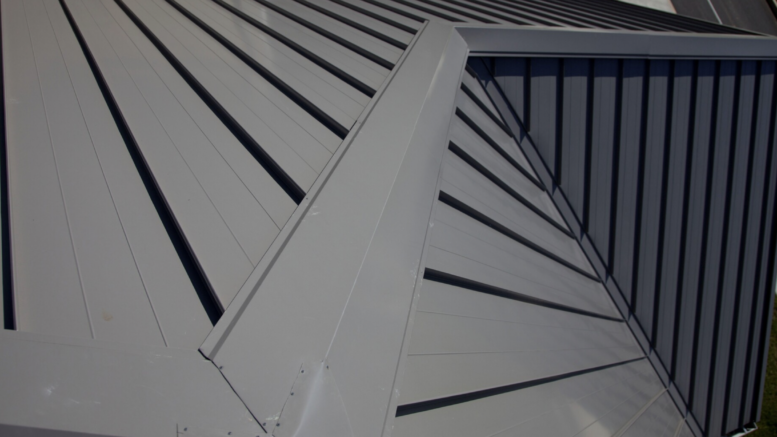Choosing the right commercial roofing material is crucial for ensuring longevity, durability and aesthetic harmony with a building’s overall design. Among the various materials available, metal stands out for its resilience and long lifespan, making it a preferred choice for a wide array of commercial structures and diverse climatic conditions. Specifically, steel and aluminum are favored for their distinct advantages, each suitable for specific roofing applications.
Steel is valued for its strength, cost-effectiveness and recyclability. Its superior fire resistance makes it ideal for areas prone to severe weather, such as wildfires, and its durability suits high-impact, industrial environments due to its load-bearing capabilities. Conversely, aluminum is known for its corrosion resistance and lightweight nature, making it perfect for coastal areas and regions susceptible to acid rain and saltwater exposure. Aluminum is also energy-efficient, easy to install, and causes minimal structural strain, making it a popular choice for both commercial and residential projects.
Metal roofing systems, offered in steel and aluminum, exemplify high-quality solutions that meet a broad range of architectural needs. Designers and installers should specify panels that not only provide superior architectural enhancements, but also come with extensive warranties that underscore the brand’s commitment to durability and quality. Key elements to consider when specifying a metal roof include a paint finish warranty and a wide array of colors suitable for various substrates and regions, ensuring they can seamlessly integrate into most design requirements. Additional details include the manufacturer’s ability to color-match to provide the perfect aesthetic look and a comprehensive system warranty.
This article will explore the optimal uses for steel and aluminum in roofing, and discuss their respective benefits and limitations to help guide material specifiers.
Advantages of Steel Roofing
Steel is the material of choice for roofing in areas with harsh climate conditions due to its exceptional structural integrity, which holds up against high winds and heavy snow loads. The material’s resistance to damage and warping can significantly extend the lifespan of roofing structures. Steel also excels in preventing water infiltration, a critical attribute for regions prone to heavy rainfall. Additionally, its thermal properties are advantageous in areas with fluctuating temperatures, as they help lessen the risk of warping, ensuring the roof maintains its shape and effectiveness over time.
The widespread availability and variety of steel, including options like galvanized and galvalume-coated, make it ideal for various roofing needs. These materials are particularly adaptable to a range of architectural designs, allowing for flexibility in aesthetics and function across different types of construction projects to ensure that steel can meet the specific requirements and preferences of any building design.
From an environmental perspective, steel stands out for being 100% recyclable at the end of its life cycle, which lowers the environmental impact associated with its production and end-life. This feature makes steel a great choice for eco-conscious users. Steel’s versatility is another compelling factor, with an array of finishes and colors available to suit different architectural styles, allowing architects and designers to achieve the desired aesthetic without compromising the building’s functionality or performance.
The load-bearing capacity and longevity of steel makes it particularly suitable for industrial buildings. Specifiers should consider the adaptability of metal roofing systems, including options for on-site roll forming, which allows contractors to control project timelines effectively. This feature means that steel not only meets the structural demands of heavy-duty applications but also offers flexibility in installation, optimizing efficiency and adherence to project schedules.
Benefits of Aluminum Roofing
Aluminum stands out as a top roofing material due to its excellent corrosion resistance, which is particularly beneficial in coastal regions where materials are quickly degraded by salt spray and high humidity. Additionally, aluminum effectively reflects radiant heat, which can reduce cooling costs in warmer months. Aluminum metal roofing products can further enhance this value with factory-formed panels that feature patented interlocking mechanisms, designed for greater durability and longevity.
Another benefit of aluminum roofs is their ease of installation. Aluminum’s lighter weight offers distinct advantages for construction projects by minimizing the load on building structures. This also aids in streamlining the installation process, resulting in decreased labor costs and accelerated project times. The malleability of aluminum allows installers to shape and adapt it to unique architectural design preferences or requirements.
Aluminum is also highly recyclable, an increasingly important trait for architects, specifiers, installers, and building owners involved in the construction of a commercial roof.
In sum, the choice between using steel and aluminum for commercial roofing requires careful consideration of both the materials’ attributes and the project-specific needs. By selecting the right material for the job at hand, you can enhance the sustainability, efficiency, and long-term viability of your project, while winning the trust of your client.
About the author: Karan Patel is the Elevate Commercial Roofing Systems Metal Product Manager. He began his career in the Building Design and Construction industry and has specialized in roofing for the past 10 years. Patel’s experience includes leading R&D for numerous roofing products, measuring technologies and leading sales training programs. He holds a bachelor’s degree in architectural and mechanical engineering, a master’s degree in quantitative management, and a master’s degree in business administration with a concentration in marketing. For more information, visit holcimelevate.com.
